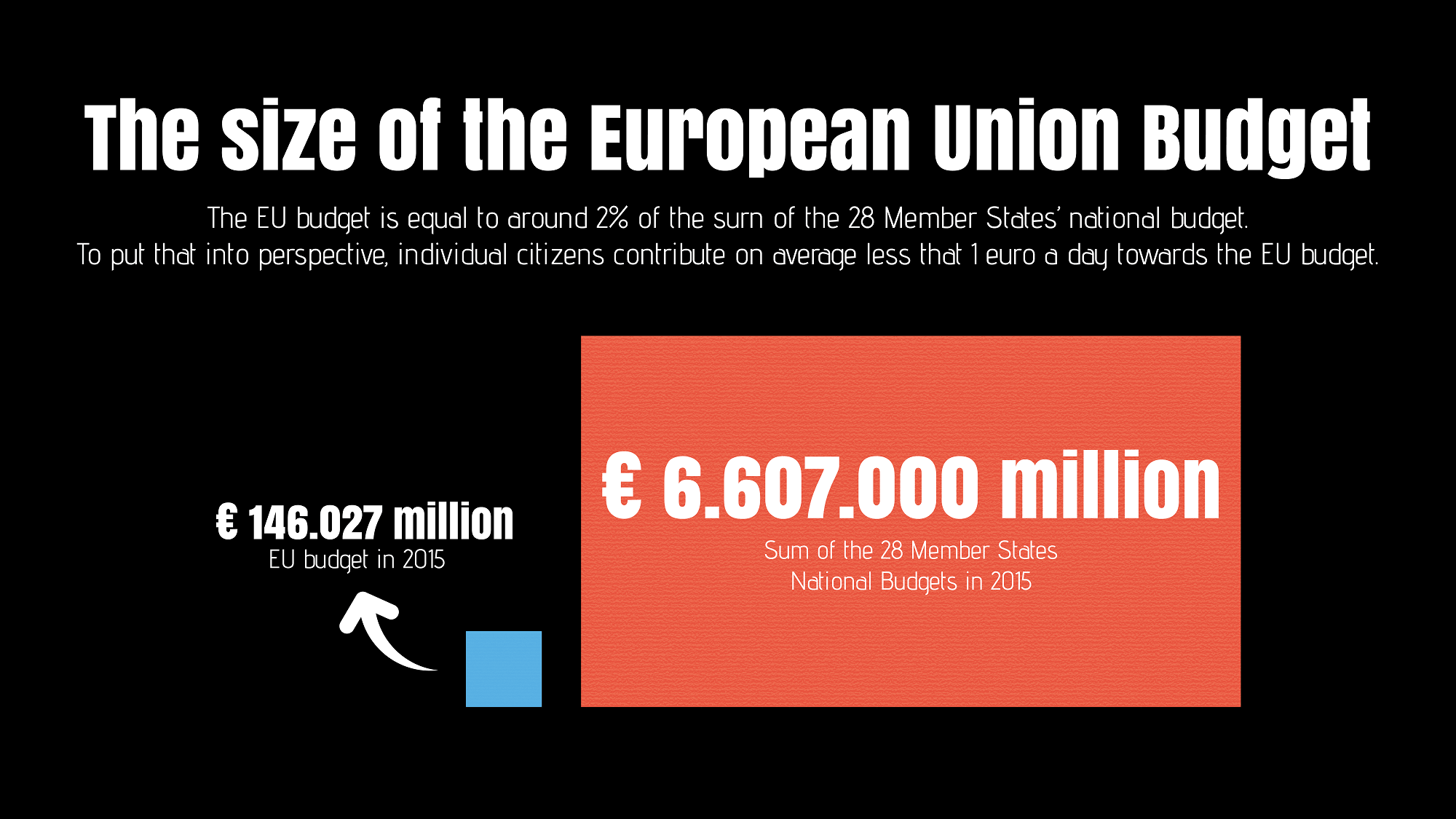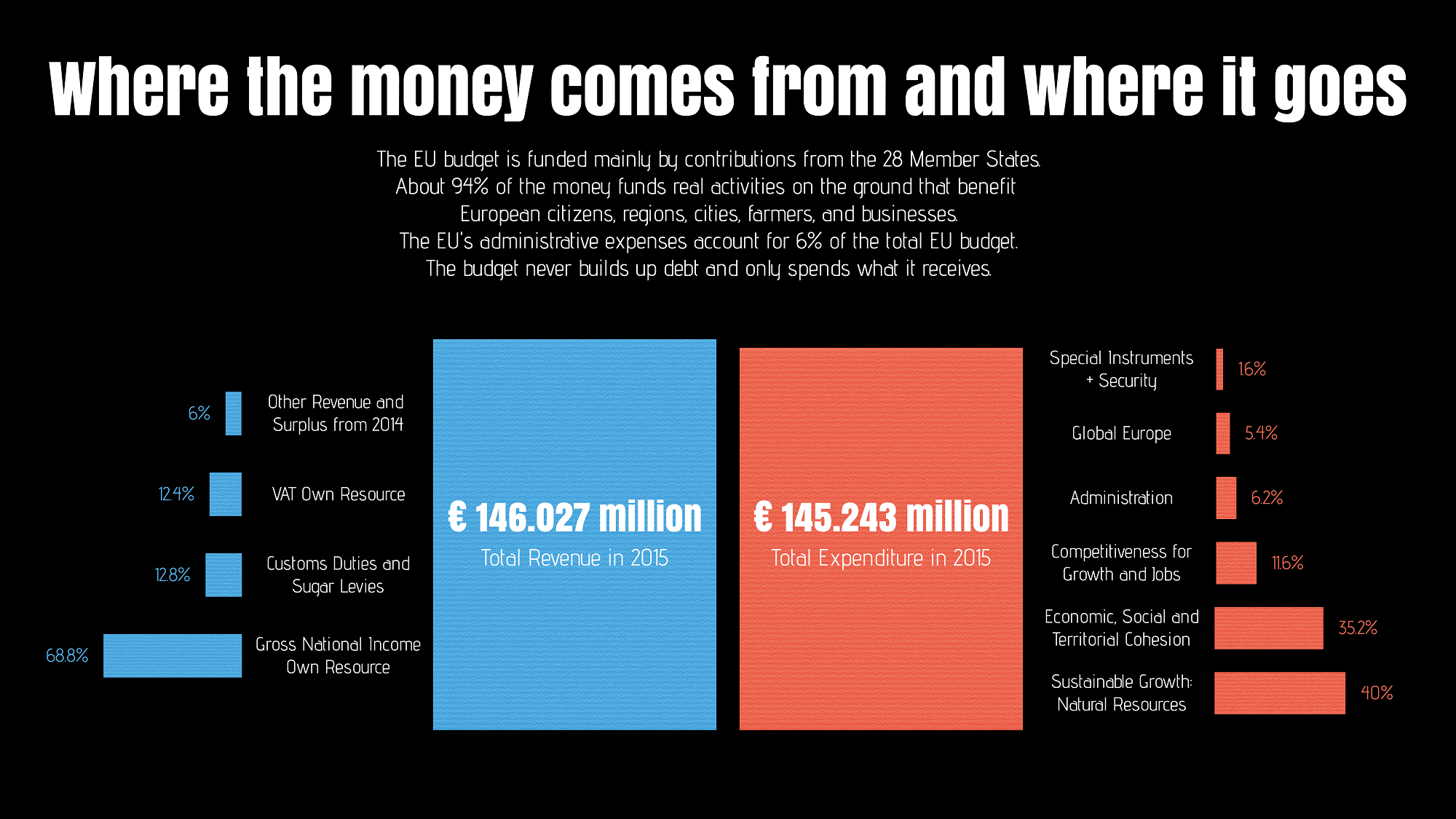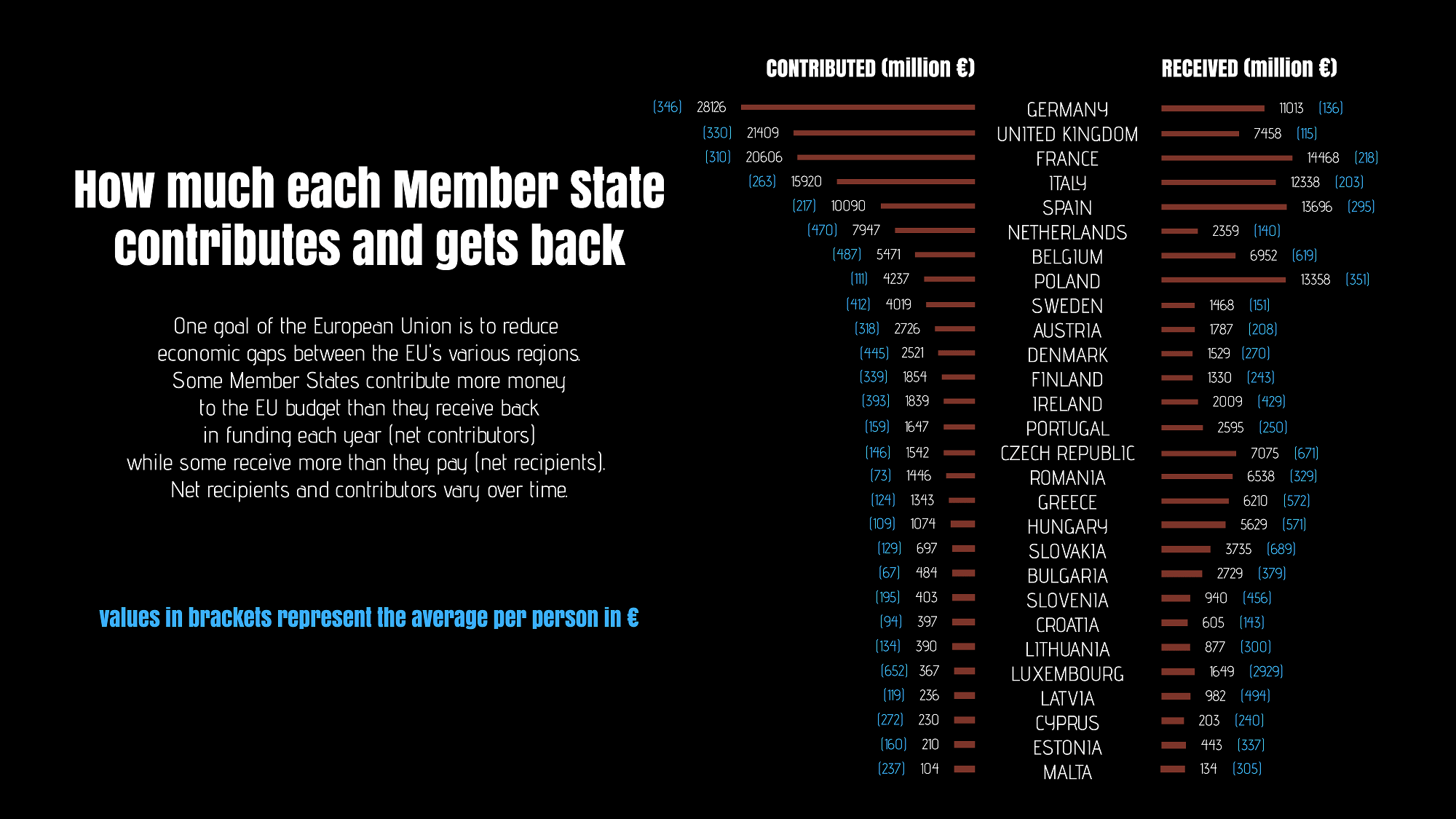Revenue
Details
Understanding the European Union Budget
A simple visual guide to show you what it is, where the money comes from, and where it goes
Understanding the
European Union Budget
A simple visual guide to show you what it is,
where the money comes from, and where it goes
Understanding the European Union Budget
A simple visual guide to show you what it is, where the money comes from, and where it goes
SCROLL DOWN


